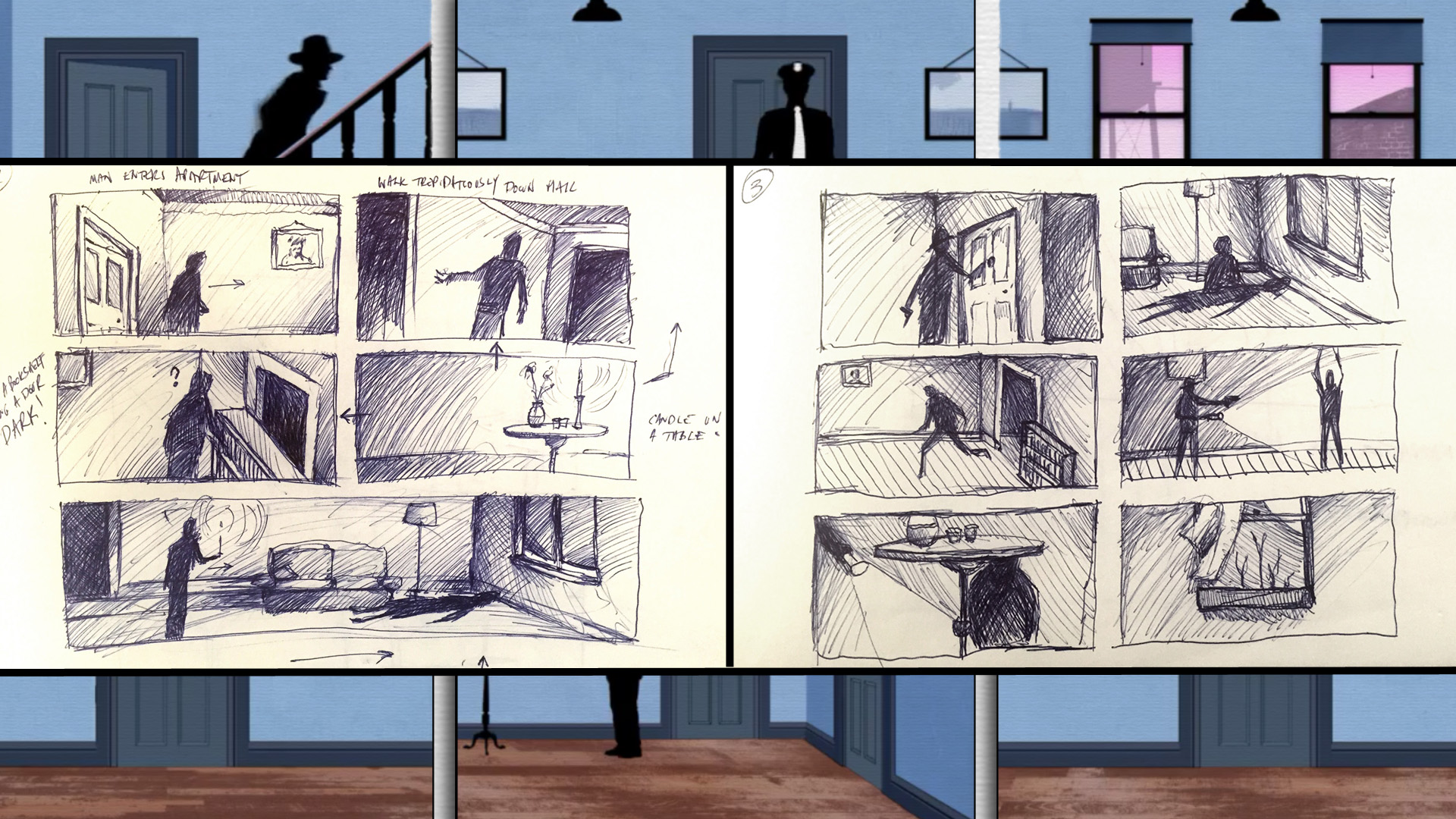ANIMAL’s feature Game Plan asks game developers to share a bit about their process and some working images from the creation of a recent game. This week, we spoke with Adrian Moore and Ollie Browne of Australian studio Loveshack Entertainment about Framed, a game in which you rearrange comic book panels to control the action.
A lot of smartphone owners never get past Candy Crush, which is a real shame—because games like Framed exist. The (currently) iOS exclusive is the ideal phone game: brief, clever, unique, stylish, and perfectly suited to gaming on a touchscreen. It was showered with awards and critical praise, especially as 2014 came to a close and reviewers compiled their game-of-the-year lists. And it all began with a book.

“Most of us were working at the same company together, which was also a games company, and we enjoyed working there, but we started discussing the fact that it would be cool to break free from that and do something new that we could direct ourselves,” Loveshack Entertainment’s Ollie Browne told ANIMAL. “And our programmer [Josh Boggs] came up with this idea. He was reading quite a famous book, called Understanding Comics, by Scott McCloud, and he realized while he was reading it that some of the ideas that Scott describes in the book could make interesting game mechanics.”
In Framed, players control not the characters, but the environment, by manipulating the frames of comic book-like scenes. Awash with bold primary colors, these scenes can play out in any number of ways depending on how you arrange them. Swap two bits and the layout of a hallway changes, letting your character get the jump on a pursuer, for example. Or simply help a character light a cigarette, fitting with the noir theme that’s emphasized by a jazzy original score.

“The basic idea that came from the comic book side of things was that normally in a typical game, a player has direct agency over actions…and Josh was wondering what it would be like if you had those actions already prescribed to you, laid out in a comic book format, and all you did was rearrange the order of them,” said Adrian Moore, another of the game’s designers. He said they were “frustrated with the way narrative and game mechanics are often very separate,” and Framed is their solution.
Moore, Browne and Boggs make up the entirety of Loveshack Entertainment. They share design duties, while Moore composes the music, Browne does the art and Boggs takes care of coding and programming. On Framed they had help from one other person, animator Stu Lloyd.

Framed follows three characters as they dodge the cops through city streets and speeding trains, taking turns knocking one another out and grabbing hold of an apparently valuable briefcase. It has the general feel of some pulpy detective novel, but it’s never clear who’s a bad guy or a good guy, or which characters are working together or against one another. The whole thing is pretty nebulous, which was intentional; the developers had played around with a more concrete narrative, but decided ultimately that a complex plot would distract from the gameplay. “When you’ve got a brand new game mechanic and a new type of game—which, to a degree, it is—it’s best not to abstract that too much by going and having some crazy setting and some crazy art style,” Browne said.

Moore said they were going for a “Humphrey Bogart, Hitchcock” kind of thing, despite the colorful look (Framed was originally all in greyscale, but the bold, oversaturated colors make it easier for players to distinguish what the characters are doing). Moore said he tried to evoke the same era with the music. A drumbeat suffices when players are rearranging panels, but the score crescendos with pianos, saxophone and more. Crashing cymbals and snapping snare drums serve as gunshots and other sound effects. That wasn’t just a clever way to avoid having to do actual foley; Moore wanted it that way from the beginning. “[Doing sound effects for games] kind of is a bit boring, to be honest with you,” he said. “There’s only so many gunshots and other types of sounds that you can really get.”
One of the most amazing things about Framed is how many different ways each scene can play out. If you haven’t arranged them correctly characters will fall to their deaths, get caught by police, or miss their train, and each of these possible conclusions plays out seamlessly, no matter how wrong you have it. Much of the developers’ time was spent testing each screen to make sure every combination could play out logically.

At the core of this is the concept of “gutters,” the spaces in between the panels in comic books. “There’s a certain amount of time that passes between the frames in a comic book in the gutter,” Moore said. “You don’t get to see everything that happens.” But you get to see the results, and in Framed that’s what really matters.
Framed is available now in the iOS App Store for $4.99.


